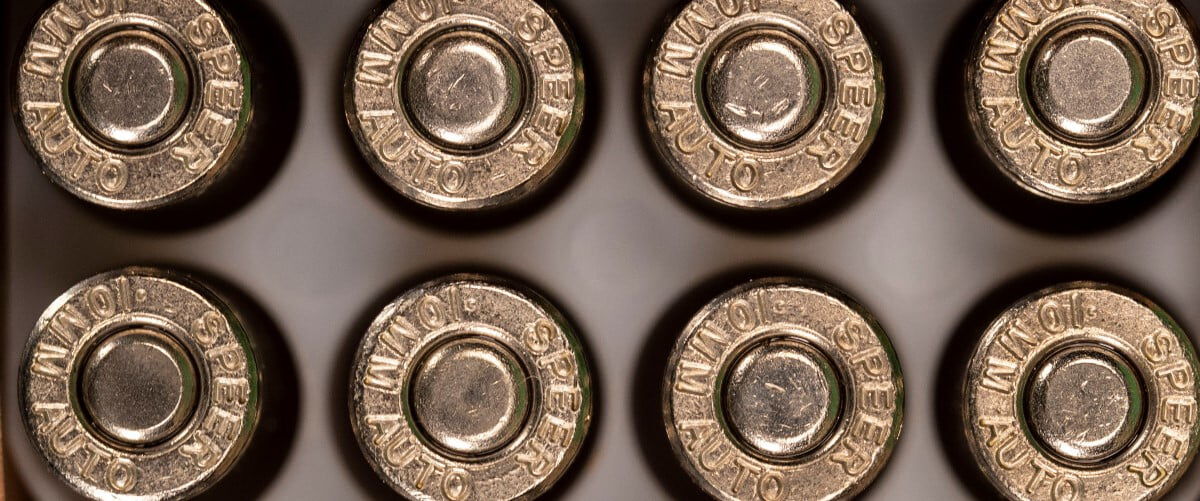
One of my good friends is a Montana native and hunts what I call "scary country." During his hunting tenure, he has lost bull elk kills to grizzly bears and has been charged at close range by a bear he was forced to shoot in self-defense. What I thought was interesting, especially after interviewing him about the incident, was the sidearm he chose to carry in the bear woods—a semi-automatic Glock chambered in 10mm Auto. "It gives me remarkable stopping power, is super accurate, and cycles extremely well," he said.
Those reasons pretty much sum up the appeal of this now-classic cartridge, but let’s dig deeper into how the 10mm Auto came to be and what it offers shooters today.
History In The Making
The 10mm has a rich history, and much of it revolves around 1911 lover Colonel Jeff Cooper. Cooper was a 45 Auto fanatic but also a tinkerer obsessed with accuracy, speed and energy. It's documented, several times, that Cooper mentioned his want for a handgun that would send a 200-grain man-stopper bullet downrange at 1,200 feet per second. He wanted the round to be uber-accurate—out to 50-plus yards because he knew a round like that would serve many purposes.
Cooper got his wish—he was intimately involved in developing the Bren Ten CZ 75 pistol. This Dornaus and Dixon firearm was chambered in 10mm Auto, and the early craze it created was remarkable. However, as often happens with popular ammunition (take the 16-gauge, for example), manufacturing and supply problems gutted the pistol and the cartridge, and for a while, it became an afterthought.

A severe law-enforcement incident reignited the 10mm Auto flame. On April 11, 1986, two Miami FBI agents lost their lives when they engaged in a firefight with a duo of bank robbers. Both suspects were also killed, but the real story came later when autopsies showed the 9mm loads used by FBI agents at the time lacked penetration. And just like that, Cooper's brainstorm to create a magnum-level round that could be fired from a semi-auto was back on the table.
The reason for the 10mm Auto was more power in a semi-automatic handgun, and most law-enforcement officers carry semi-automatic pistols for their volume and rapid firing. It was concluded that if pistols and submachine guns could cycle these rounds, the 10mm Auto would be an ideal choice for stopping bad guys quickly and not allowing them to get off more shots.
Too Much Of A Good Thing?
Unfortunately, lawyers got in the way, and the 10mm Auto was dinged for its recoil and deemed too much gun for some agents to handle. The FBI's answer to the problem was to take the 10mm Auto, reduce the amount of powder, and reduce the recoil. This reduction in powder, of course, also reduced the rounds' down-range velocity and energy.
But today, the 10mm Auto is enjoying a resurgence thanks in part to changing sensibilities and to full-power offerings like Speer's 200-grain Gold Dot, which clocks in at 1,100 fps. The cartridge features a pressure-formed lead core bonded to a uniformed jacket, a single atom at a time, eliminating separation on impact. With options like this and other modern loads, it’s no surprise 10mm Auto remains the choice of many self-defenders, recreational shooters, and hunters who wander bear country.